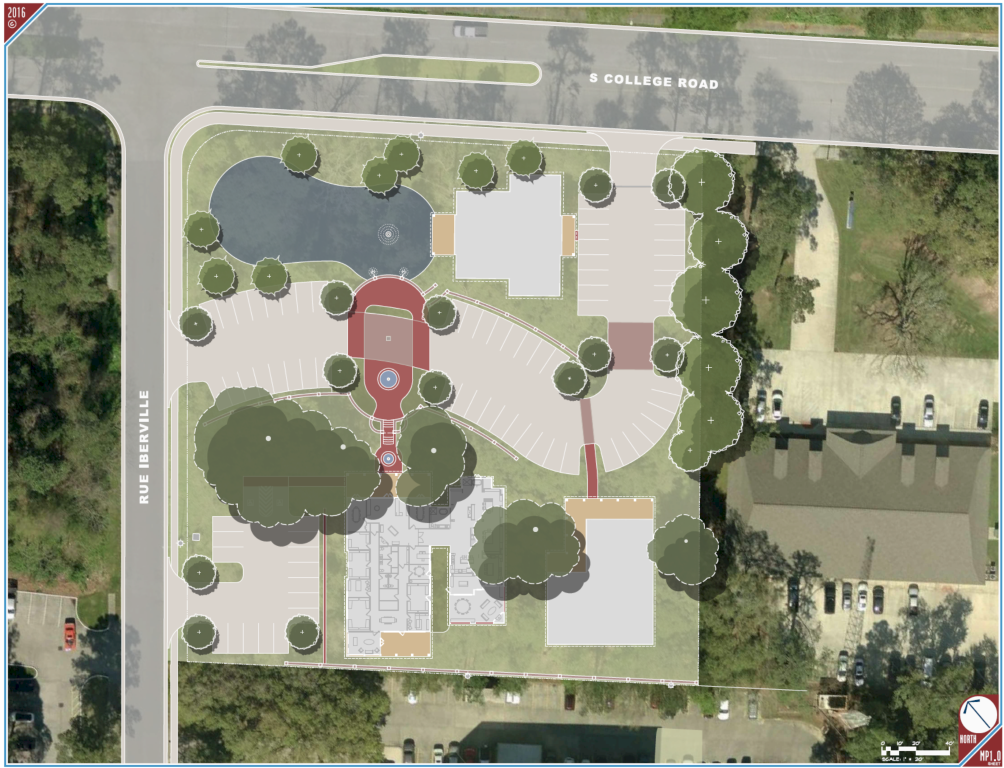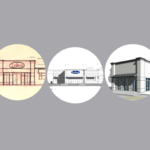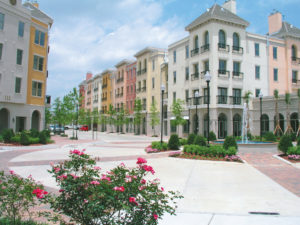Spring is in the air: green is awakening in the trees from their winter slumber, flowers are blooming, and bird song fills the skies. Do you remember planting a tree on Earth Day when you were in elementary school? I sure do! And with all the time we’re spending ‘socially distant’ in the current crisis, the outdoors has become my favorite respite.
The environment around us plays such an important role in the design of buildings. But did you know the ‘landscaping’ portion of a project doesn’t need to be limited to planting trees, shrubs, and turf? This month, we turn our attention to a lesser-known profession in the design world: landscape architecture. The following interview is between me and local landscape architect, Michael Cullen, with LAND Architecture. Enjoy!
Q. Michael, I know that design can have a huge impact on our daily lives: the cars we drive, the devices we hold, the clothes we wear, the buildings we live and work in. Tell us a little about landscape architecture. What impact can good landscape design have on us?
A: Landscape Architecture is a relatively new profession dating to the 1800s, though many designers have performed similar duties throughout recorded history. Fredrick Law Olmstead is widely regarded as the “father” of Landscape Architecture with many projects to his credit, including Central Park in New York City.
A well-planned landscape will increase a building’s energy efficiency, improve a property’s value through curb appeal, improve the water quality of runoff leaving a site, and above all, create comfortable outdoor spaces for people to enjoy.
Q. So, what do you mean when you say, ‘holistic approach’ to landscape architecture? Why is this approach so important to good design?
A: Our design approach considers many factors; a client’s specific needs, the project’s budget, local regulations, environmental conditions, and maintenance. We accentuate existing site attributes such as pleasant views, mature trees, prevailing breezes, and topographic features while minimizing the impact of less desirable conditions like intense solar exposure, offsite noises, or poor drainage.
A well-crafted plan not only accounts for the maturation process of plants in a landscape, it too, will seamlessly blend systems like drainage, lighting, audio, electrical distribution, insect control, and irrigation into an outdoor space. Designs are most successful when these components are out of sight and organized in a manner that is straightforward to maintain.
Q. Michael, we have come to appreciate firsthand the impact of a well-conceived master plan. Our Iberville Grove office park has been a joy to watch. Before you joined the project team, Greg Manuel and I were just going to place the building on the corner to preserve as many trees as possible; we could not have conceived of sculpting the site like you did. You literally changed the direction the hills sloped, while preserving the gorgeous live oaks, and placed the building as the focal point behind layers of landscape elements like the pond, fountain, and brick retaining wall. How do you do it? Maybe give us a small window into your creative process…
A: We relied on the experience of our entire design team to know what was possible for this challenging site. All too often, developers rush into a project by clear-cutting and leveling land rather than follow a tried and true design process that evaluates the attributes of a site before committing to a plan.
LAND Architecture’s vision for the project was an extension of that shared by the Manuel Team. We first took inventory of the site to know what existed on the property. We then assigned value to each element, whether positive or negative. A few positives found on the site include the beautiful grove of live oaks, the topographic relief that is uncommon to many south Louisiana sites, and the pleasing offsite views. Negatives that we found included trees that were in poor health, drainage structures that crossed the site, and utility infrastructure that encumbered the perimeter of the property. We combined what the site told us with our knowledge of building placement, tree preservation, grading and drainage, and the local development code to formulate the master plan that was presented to the Manuel Team.



Q. Any advice for the person out there who’s interested in landscape architecture as a potential career path?
A: The American Society of Landscape Architects is one of the professional associations to which many Landscape Architects belong. Their website, ASLA.org, is a wonderful resource for individuals interested in the profession. Louisiana State University’s Robert Reich School of Landscape Architecture is one of the best schools in the world and regularly ranks as the highest accredited school in the country. This school is the only accredited Landscape Architecture program in Louisiana.
Q. Michael, I know you lead a talented team. Have you found something you’d like to share that inspires you to wake up every day and keeps you going?
A: My path to the profession quite literally was formed through play. Unbeknownst to me, I was training for the future whether moving plants to camouflage a clubhouse, redirecting water flowing through a ditch by placing sticks or dirt to force a specific path, or shaping soil into a network of roads to accommodate a toy. I approach work today with the same enthusiasm and thirst for knowledge; I derive joy from improving the quality of life for others.
Interested in participating in World Landscape Architecture Month? Click here to find out how: asla.org/wlam
Written by our in-house Architect, Kevin Stewart, with answers from Michael Cullen of LAND Architecture






